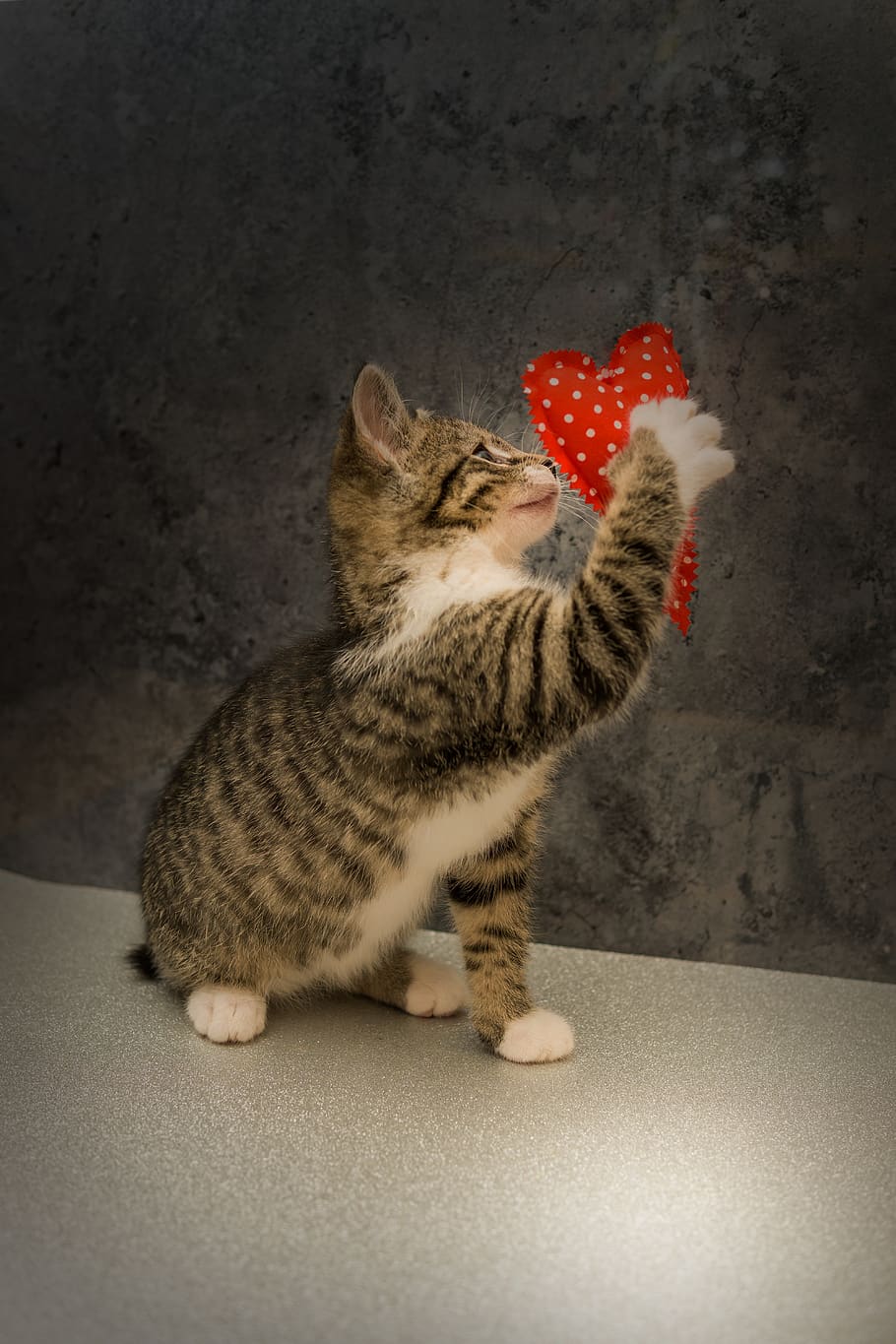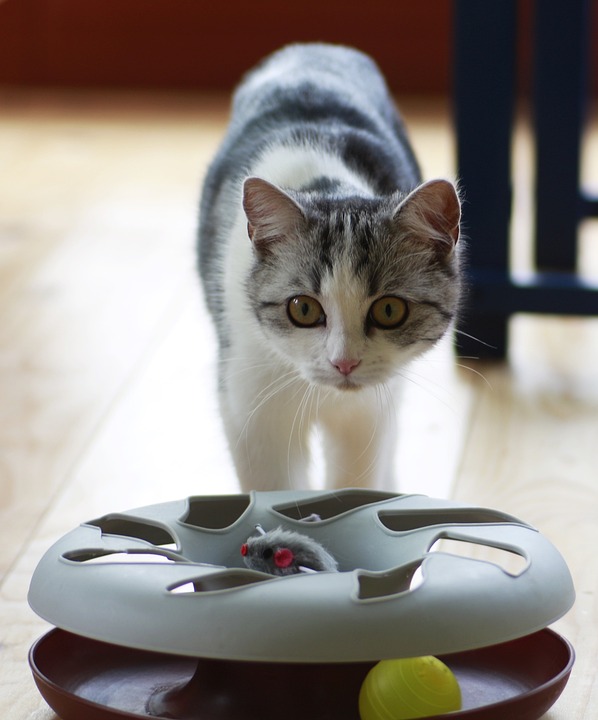
My Cat Is Hyperactive: What to Do?
Summary
Hyperactivity and Frustration in Cats
Hyperactivity and Confinement in Cats
Hyperactive Cat: Diet
Hyperactive Cat: In Case of Illness
Hyperactivity takes different forms, and a distinction must be made between the cat described as hyperactive by its owner and the cat diagnosed by a behaviorist veterinarian as being hyperactive. The pressure of the cat’s environment can induce unruly or stereotyped behaviors, but medical pathologies also generate hyperactivity in the cat.
Hyperactivity and Frustration in Cats
Environmental stress
The pressures exerted by the living environment in the context of domestication and, in particular, loss of control can generate in the cat agitated and maladaptive behaviors, even pathological ones such as stereotypies: compulsive, repetitive movements of wandering, grooming, bulimia or self-mutilation that the animal inflicts on itself, which punctuate its days and from which it is complicated to dissuade it.
It is a form of hyperactivity but restricted to one behavior. Although there are drugs that can help the animal adapt, without lifestyle changes, the cat’s quality of life will remain miserable. It is necessary to seriously consider offering other living conditions to the animal or offering it for adoption.
Frustration due to lack of self-control
How does frustration manifest itself?
The lack of self-control makes the animal unsociable and unfit for successful integration into a group. It encounters difficulties in carrying out some activities.
It will be noticed in situations that require calmness to succeed in an action, for example:
- An agitated cat will not know how to watch for prey and will not be a good hunter;
- a distracted cat will not be cautious and will be injured more often;
- a cat that does not know how to inhibit its aggressiveness will be a victim or cause more serious injuries during fights between fellow cats.
This cat is often in a state of frustration due to the negative feedback from its actions. Frustration leads the animal to repeat its efforts to improve, which may lead the owner to describe the cat as hyperactive because it is always looking for rewarding results.
The lack of self-control can come from:
- A lack of interest from the mother cat for her kittens when, for example, the cat is expecting a new litter;
- excessive surveillance by the anxious mother, if it is about a cat who lost her kittens because of man, by predation, or by disease, which limits the kitten’s desire for exploration;
- a lack of experience with social games with the siblings;
- sensory deprivation (kitten raised in isolation and a cage);
Early weaning of a lively kitten can turn the hairball into a fury that is difficult to manage. Owners often describe the kitten’s or cat’s character as wild, destructive, and aggressive. This agitated behavior is exacerbated by frustrations, especially those caused by confinement.
How to help the cat control itself?
A human cannot educate a cat to behave like a feline, but you can help it be autonomous and control itself. You have to be very patient because it is with age and experience that he will become more gentle, which can take 2 to 3 years.
Some tips to achieve this:
- Avoid conflicts and punishments. As the saying goes, “prevention is better than cure”: encourage and multiply learning opportunities. To do this, the kitten must come out of the cocoon to face the world. Let him go outside and be active outside the house, which must be felt as a haven of peace and rest. Activities take place outside.
- Look for other owners of young cats on the internet or in the neighborhood and arrange for alternating shifts so the cats can meet and play together.
- Don’t stress your cat too much: if she gets upset and loses control, walk away and don’t touch her again. Don’t hug your cat too often, which is a form of physical restraint you should avoid to respect her learning to be independent.
Cat hyperactivity and confinement
The behavior of the unsterilized cat
An unsterilized cat kept in an apartment will exhibit partner-seeking behaviors: meowing, roaming the apartment, rolling on the floor, and climbing everywhere. If other partners are in the neighborhood or building, these nuisances will be endless.
To solve this problem and for his general well-being, we strongly advise you to sterilize an indoor cat.
Nocturnal agitation of the kitten
The 15 minutes of the madness of confined cats always amazes their owners. It’s an episode during the day, around dusk, when the cat is exceptionally playful and restless: it runs through the rooms and invents a chase scenario for fifteen minutes. This outlet behavior is fun to watch, and it’s easy to get caught up in the cat’s playfulness.
Some cats exhibit this at night and are labeled hyperactive simply because owners feel it’s time to sleep, even though the cat is a nocturnal hunter.
If these behaviors disturb your sleep, you need to find suitable toys that mimic moving prey, build places to explore and enrich them with treasures (mice, balls, feathers, psychoactive herbs), and close the door of his room to avoid hearing noises.
Hyperactive cat: diet
The industrial diet that our domesticated felines follow is far from the diet and habits of this species. The foraging phase is what occupies the day of a carnivore. This truncates the cat’s behavior: it no longer has to hunt for its meal as it rarely feels hungry. This lack of activity can lead to frustrations manifesting in agitated behavior.
The nature of the diet can also be at fault, especially the use of additives or proteins in the formulations, which can cause allergies and dermatitis. These pathologies are sources of permanent irritation, leading to excessive grooming with frantic running around the house. Parasitosis can also be suspected when hygiene is not up to par.
There is no specific diet, and it is necessary to try it for a few months to see an improvement.
Hyperactive cat: in case of disease
Hyperthyroidism in cats
The thyroid secretes hormones in metabolism, energy production, and temperature regulation. When the function of this gland is disrupted, the cat has an increased energy level and appetite.
It is a disease that mainly affects older cats. Owners feel as if their old cat is living a second youth.
The cat’s weight loss despite a voracious appetite, the increase in water intake and urination, and the presence of a nodule in the neck should alert the owner to consult a veterinarian who will give the appropriate treatment after confirmation of the diagnosis.
Feline hyperesthesia
This syndrome appears in adulthood after normal growth. The behavior resembles the 15 minutes of twilight madness observed in domestic cats, especially indoor cats. The cat seems possessed by something: its behaviors are self-centered (directed primarily at itself) and often compulsive. They occupy the cat’s entire day and even night.
Here are some common symptoms:
Sudden changes in behavior accompanied by mood swings from positive to aggressive: the cat seems to enjoy cuddling to suddenly biting hands.
Compulsive grooming, mainly on the flanks and tail, can lead to hair loss.
Chasing and attacking the tail; spasms of the skin on the back; intolerance to touch along the spine: petting may trigger any of the above behaviors.
Pupil dilation, staring at an object or a person, hallucinations with flight or pursuit of something that does not exist, and noisy vocalizations.
Epileptic seizure: loss of consciousness with salivation and paw movements (the cat pedals in the void).
These symptoms can be caused by pathology, trauma, or an allergen. The veterinarian must rule these out before referring the animal to a fellow behaviorist or neurologist.
The causes of this syndrome are unknown, but some research points to abnormal electrical activity in the brain. Therapies with anti-convulsants (phenobarbital), specific psychotropic drugs for treating OCD, or those that increase serotonin levels, painkillers, and dietary changes can be successful.
Senility in the old cat

The elderly and weakened pet is often more anxious and sometimes more agitated. Senility can lead to a state of confusion with phases of hyperactivity: wandering with hoarse and noisy meowing, often at night. Please consult your veterinarian for a medicated treatment.
In conclusion, understanding and addressing hyperactivity in cats is crucial for their well-being and household harmony. By identifying potential causes, implementing lifestyle changes, and seeking veterinary guidance when necessary, cat owners can help their feline companions find balance and lead happier, healthier lives. Remember, a calm and content cat is a joy to be around.





